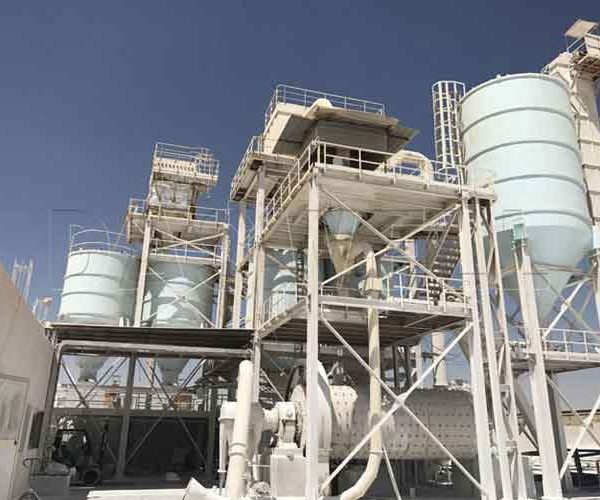Limestone is a sedimentary rock abundant on earth, which is mainly composed of calcium carbonate (CaCO₃) and many other minerals. Calcium hydroxide is also called hydrated lime, lime hydrate or slaked lime, whose chemical formula is Ca(OH)₂and it is the product of reaction between quicklime and water. Then how can limestone turn into calcium hydroxide? In fact, it is partly of the limestone cycle. When calcium carbonate (CaCO₃) is heated, it can produce quicklime(CaO) and carbonate dioxide (CO₂). And the carbonate dioxide is driven off by air flow in lime kiln. Then when the quicklime is added with appropriate amount of water, the process can produce calcium hydroxide and heat. So this is how calcium hydroxide is made from limestone.
Processing of Limestone
Quarrying
The process of producing calcium hydroxide starts with extracting limestone from quarries.
Sizing
To obtained desired sizes of feed limestone, the extracted limestone will go through primary, secondary and even tertiary crushers. Then the reduced sizes of limestone is screened and washed to ensure the high quality of final product.
Lime calcining
Currently, limestone is calcined in lime kilns. And there are two kinds of lime kilns, one is rotary lime kiln and vertical lime kiln. With development of technology and consciousness of environment, modern lime kilns are built to save energy and perform with high efficiency. In general, the limestone in lime kiln will go through three stages: preheating, calcining and cooling. In the preheating stage, the feed limestone is pre-calcined using the heat air from kiln so that it can thoroughly burnt down. While in the calcining stage, the fuel is introduced into the lime kiln to calcine the preheated limestone. Finally, the quicklime is cooled by contact with cooling air, so that the final product can be handled by conveyors and so on.
For the modern rotary lime kiln, it is equipped with separate vertical preheater and vertical cooler. As a result, there is no need for long rotary lime kiln. And it also can improve heating efficiency for it uses the exhaust gases from kiln to preheat the limestone. In turn, this can save energy. As for vertical lime kiln, it contains three chambers to go through the three stages respectively.
Hydration
Firstly, quicklime is crushed for processing hydrated lime. Then adding water to the crushed quicklime to make the chemical reaction happen. Of course, the proportion of quicklime and water is carefully calculated. And then the obtained hydrated lime is classified to meet customers’ specific needs.




